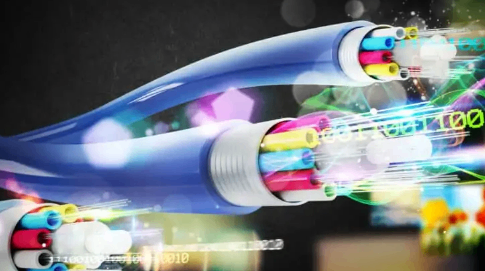ڈیوپیٹی فیبر کیفیر کابل کو
ڈیوٹس: شیانگ ، چین
نگاہ کے ذریعے: مینڈر زہنگ
فون:400-964-1314
ڈیو موبائل فون: 8613904053308
ڈیوچاسپ اور و و وجکٹرو
2024-04-08 3378
جب انتخاب کیبل کے خریدنے کے وقت انتخاب کا خیال رکھنا ضروری ہے کہ انتخاب کی ڈھانچے کی خاص تقاضات اور معیاروں کو پورا کرنا ضروری ہے ۔ یہاںs a more detailed breakdown of the key factors to consider:
1. Fiber Type and Specification:
Single-mode vs. Multi-mode Fibers: Single-mode fibers are designed for high-speed, long-distance transmission, while multi-mode fibers are suitable for shorter distances and lower speeds. Choose the fiber type based on your network's transmission requirements.
Core and Cladding Diameter: The diameter of the fiber core and cladding affects its transmission characteristics. Select the appropriate diameter based on your bandwidth and attenuation requirements.

2. Number of Fibers:
Consider the future scalability and expansion plans of your network. If you anticipate adding more devices or increasing data transmission capacity, it may be beneficial to choose a cable with a higher fiber count.
3. Transmission Distance and Bandwidth:
Determine the maximum transmission distance required for your network. Single-mode fibers typically offer longer transmission distances compared to multi-mode fibers.www.دسcable.cn
Assess the bandwidth requirements of your network to ensure that the selected cable can handle the desired data rates.
4. Loss Characteristics:
Attenuation is a meاُسre of how much signal strength is lost as the light travels through the fiber. Low attenuation is crucial for maintaining signal quality over long distances.
Insertion loss occurs when light passes through connectors or splices in the cable. Minimizing insertion loss is essential for maintaining efficient signal transmission.
5. Mechanical Properties:
Consider the bending radius of the cable, as it determines how easily the cable can be routed in tight spaces.
Tensile strength is important for cables that may be subject to pulling forces during installation.
The cable's durability and resistance to environmental factors such as temperature, humidity, and UV exposure should also be evaluated.
6. Jacketing and Protection:
The outer jacket of the cable should be durable and resistant to damage from physical impact, abrasion, and chemicals.
Fire resistance is an important consideration, especially in areas where fire safety is a concern. Choose cables with flame-retardant jackets to minimize the risk of fire spread.
Weather resistance is crucial for outdoor applications, where cables may be exposed to extreme temperatures, moisture, and other environmental conditions.
7. Manufacturer and Quality:
Reچھپ the reputation and reliability of different cable manufacturers. Choose a manufacturer with a proven track record of producing high-quality cables that meet industry standards.www.دسcable.cn
Look for certifications and compliance with relevant standards such as ISO/IEC, Telcordia, or RoHS to ensure the cable's quality and safety.
8. Cost and Budget:
While cost should not be the sole determining factor, it is an important consideration. Compare prices from different manufacturers and suppliers to find a cost-effective solution that meets your requirements.
Be cautious of extremely low-cost cables, as they may compromise on quality and reliability.
By taking into account these detailed factors, you can make a well-informed decision when purchasing optical cables for your network infrastructure. Remember to carefully evaluate each factor based on your specific needs and requirements to ensure that the chosen cable provides optimal performance and reliability.
www.دسcable.cn